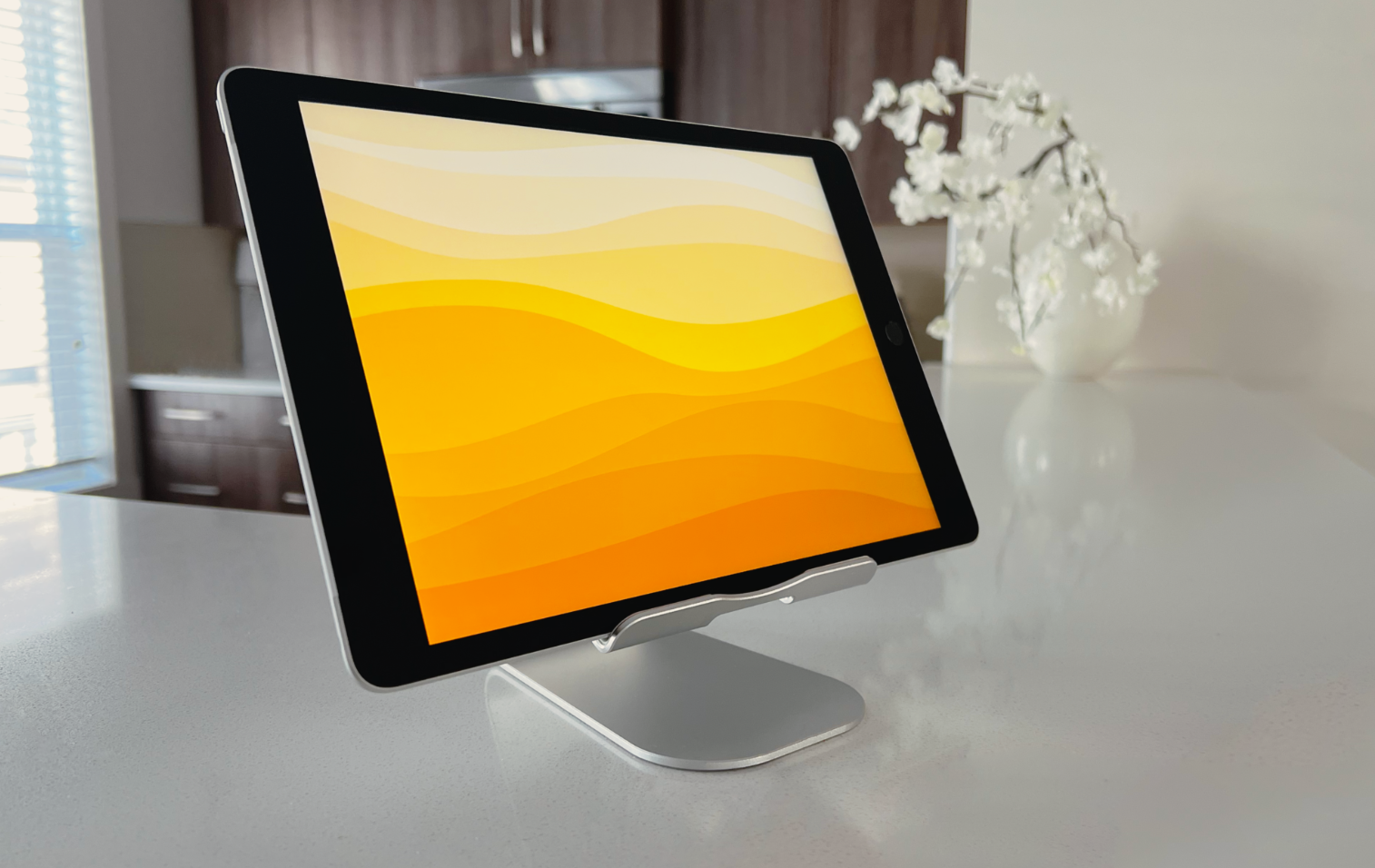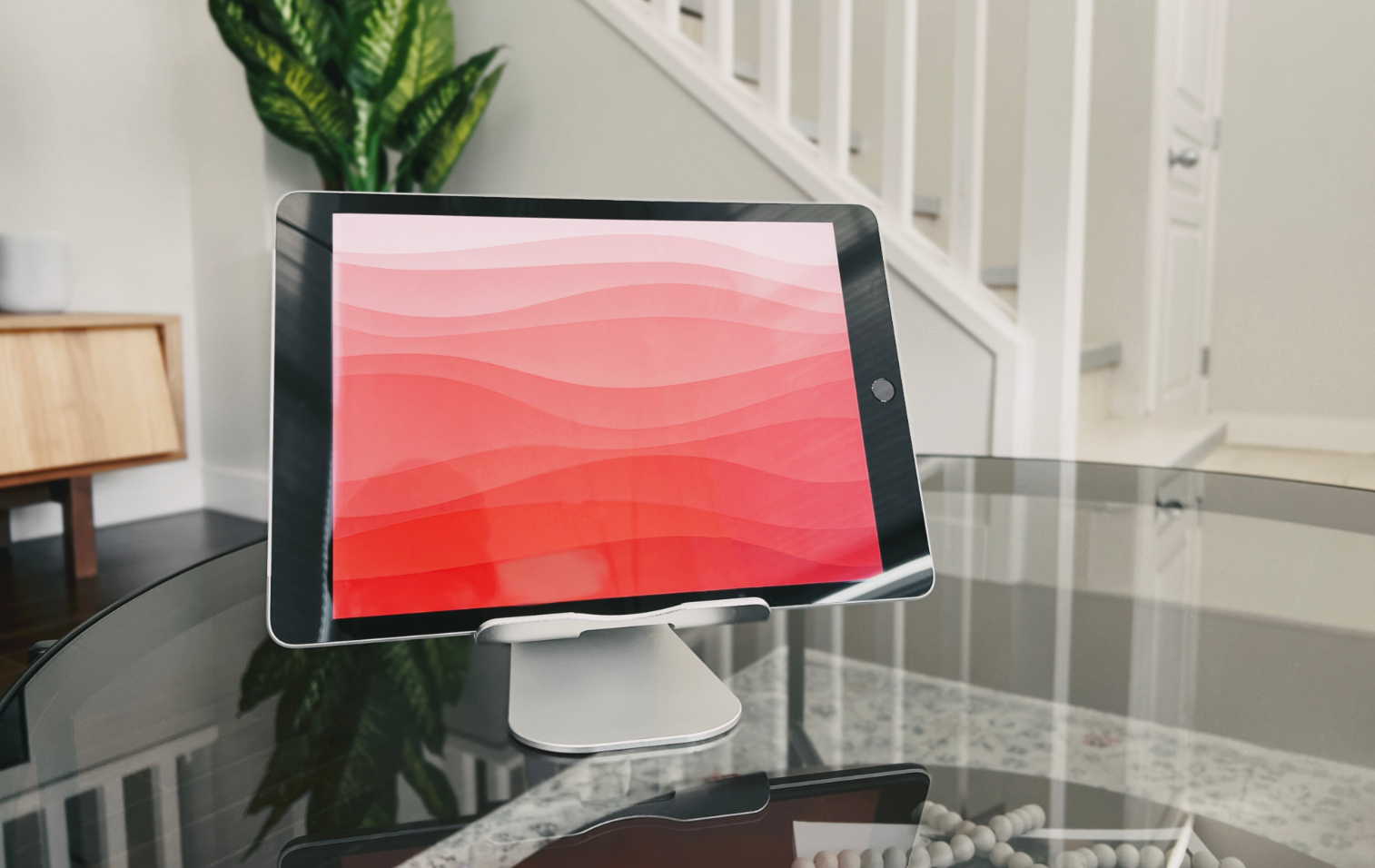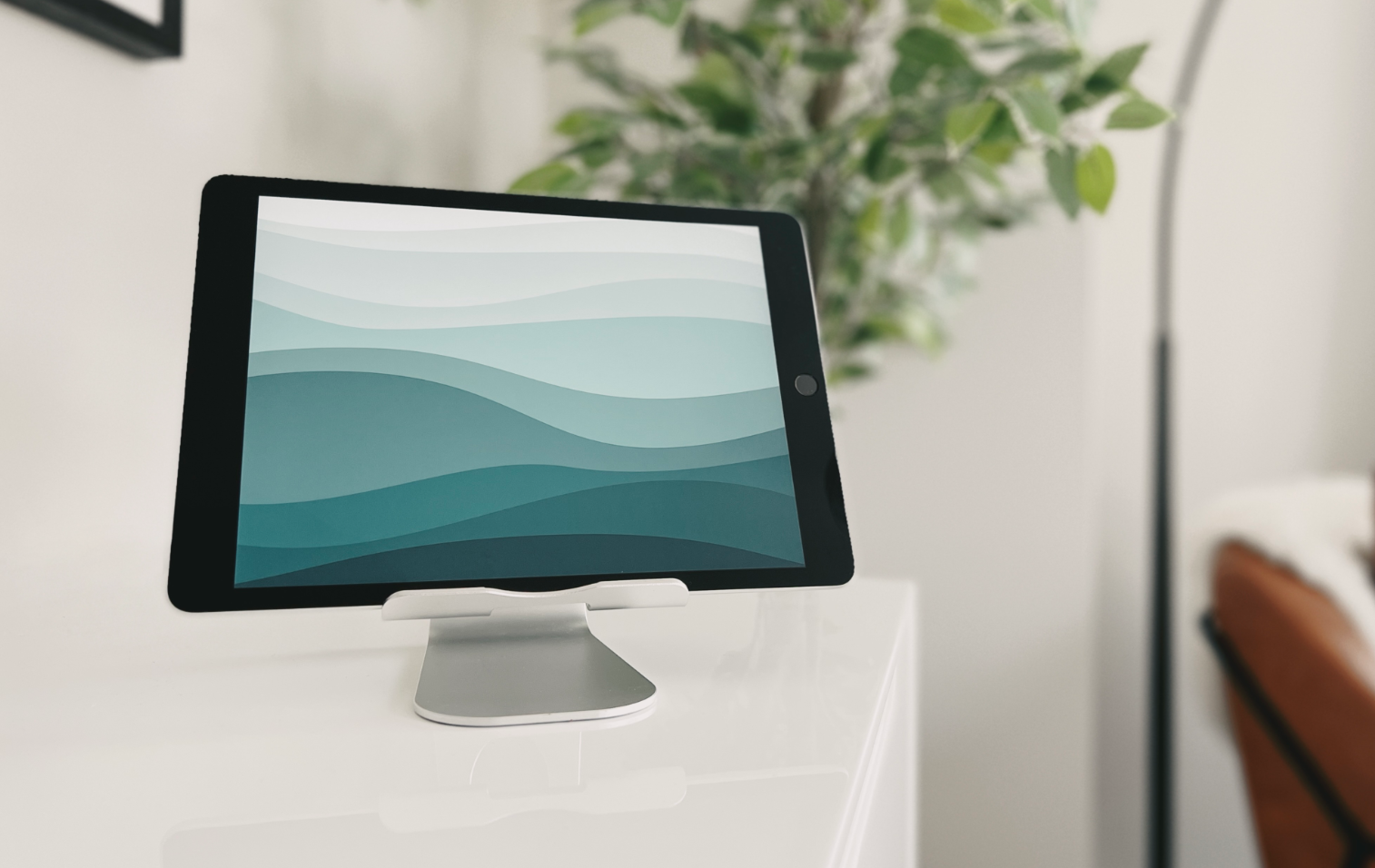iPad Home Hub
Apple might already have the next great home hub experience right under our fingertips!
Suppose Apple ever plans on entering the home hub market by releasing its own branded speakers with integrated display. In that case, it will have a tough time competing with the likes of established players like Google & Amazon, and even against its own $329 iPad.
Above your basic smart speakers like the Amazon Echo, Google's Nest audio devices, and Apple's HomePod mini lives a range of devices that integrate a smart speaker with a screen. This second tier of smart home devices offers additional functionality, including at-a-glance information like news and weather, to more advanced functions, including playing videos, video calling, and a control point for a home's smart devices. The obvious benefit of a screen are that it provides more interaction methods and becomes a faster way of getting the information you need. Personally, short of asking Siri to play a well-known playlist, asking about the weather, or finding out what an orangutang sounds like (try it: "Hey Siri, what does an orangutang sound like?"), I prefer getting information visually instead of having Siri read it out.
Apple has been rumoured to be playing around in this space, with Mark Gurman reporting back in Spring 2021 that Apple "has also been developing new speakers with screens and cameras, but such a launch isn't imminent." But as much as I would love a HomePod device with an integrated screen, I foresee a couple of challenges Apple has to overcome first.
1. Price
If Apple entered the home hub market with a HomePod with a screen device, the cost would become a significant challenge. Compared with Amazon and Google offerings at the time, the HomePod always remained prohibitively expensive; I sense that Apple's HomePod was partially DOA due to its high entry price of $349. To make matters worse, both Amazon & Google already had a range of speakers in the market the HomePod entered, many priced well below $100.
Currently, the range of screen-based home hub devices from Google and Amazon ranges from as low as $84 up to $249 for the top-tier Echo Show. Call it pessimism, but I can't see Apple developing a device that comes close to offering price parity with the Echo Show and Nest Hub lineup. That would leave Apple more likely to launch a device that comes in at the new upper end of an established home hub market, the strategy that doomed the HomePod.
2. Portability
One of the perks of devices like the HomePod mini is placing multiple units across my home. At $99, a HomePod mini is economical enough to enable this.
A home hub with a screen is different. Because interactivity is handled primarily through a screen, a screen-based hub should be positioned more strategically than just being within earshot. And in my case, the optimal position changes dramatically based on the task I'm doing. For example, having it closer to the stove would be more beneficial when cooking. For other jobs, like looking up a forecast or controlling my smart devices, a device centrally located in the home would be better. And because these devices require being tethered to power to operate, I'd also be limited to where & how I can use them.
The Alternative
But I think I found a solution to this problem: the basic iPad.
At $329, the basic iPad is a very capable iPad and an exceptional home hub device. Its price, portability, and breadth of features make it an ideal home device.
In the kitchen & dining area, the iPad functions as a convenient screen for recipes, ordering takeout, watching YouTube, and playing Apple Music.
Although it doesn't have the audio quality of an HomePod mini, its speakers are more than sufficient for FaceTime, casual listening, and viewing content. It's also exceptionally portable - with a built-in battery allowing the iPad to work anywhere you need it to as a home hub. And with rumours reporting that Apple has scrapped plans for a HomePod with a built-in battery, an iPad can be an attractive offering for those wanting a portable smart device that's a little more than a basic Bluetooth speaker.
The iPad becomes a hub for controlling the AppleTV, chatting with family & friends on FaceTime, checking on the weather, controlling our smart devices, and using AirPlay to stream content to the TV in the living area.
The iPad functions this way in our home. It's regularly placed in the kitchen for recipes & watching YouTube. When brought down to the living room, it becomes our Apple TV remote and FaceTime hub. And in the bedroom, the iPad works great for music, watching content, being used as a photo album, and more. And during the summer, the iPad joins us out on the patio for some background tunes. And if it requires power, it's effortless to use any of the existing USB cables to plug and charge the iPad. The experience gets elevated even further with the iPad propped up on a cheap tablet stand. I have a number of these stands scattered around the house, making it easy to move the iPad to the exact location I want it to act as my portable home hub.
homeOS
While the speakers on the iPad could be enhanced, the most significant potential point of growth for the iPad as Home Hub is in software. When Apple first debuted Front Row on the iMac in 2005, its purpose was to create a specialized interface for playing music, photos, DVDs and Movies. Similarly, Apple introduced CarPlay as a specialized adaptation of iOS for when an iPhone is connected to a vehicle, offering a tile-like interface with simplified music, maps, and other interface controls.
The iPad becomes a secondary display in the office for viewing my calendar, following up on tasks, setting reminders, and additional ways of managing my time.
I believe the iPad is already perfectly positioned as a home device, and I think a potential evolution for iPadOS would be the introduction of a homeOS. homeOS could serve as a specialized software experience designed for the home, a portal that gives all family members access to a shared pool of information - like Maps, Music, Weather, shared family Facetime Contacts - while keeping user-specific information private.
An iPad Home Hub interface could be composed of commonplace widgets (timers, calculators, weather, etc.) to streamline the interface further when the iPad is in a hub state. Additionally, an iPad Home Hub could be configured to differentiate the voices of family users, just like the HomePod already does, customizing the information displayed to each user. And with technologies like TouchID & FaceID, different profiles in the iPad Home Hub could be easily changed based on which user is interacting with the hub, with a more generic interface shown when in a non-personalized state. Best of all, this would require no new hardware - all of this could be baked into existing iPads. Toss in an optional dock accessory that features a HomePod-mini style speaker, and you have a very accessible home hub strategy within arms reach.
The hub becomes a convenient device for viewing photos and videos, controlling our smart devices, playing music, and checking on the forecast in the bedroom.
In Sum
As much as I would like to see Apple grow in the smart speaker market, I struggle to see them successfully release a competitive product in the space that follows the current conventions used by Google and Amazon. Instead, I believe Apple has the potential to create a compelling software experience by harnessing its existing iPad hardware. For users who already own an iPad, this becomes a cost-effective way to morph the tablet into a home hub device when needed while retaining the power of iPadOS when it's not - exactly like what happens with CarPlay on the iPhone. Throw in a charging accessory that doubles as a dock and/or smart speaker, and you have a product that could become an exciting Apple-based solution for the home space.





